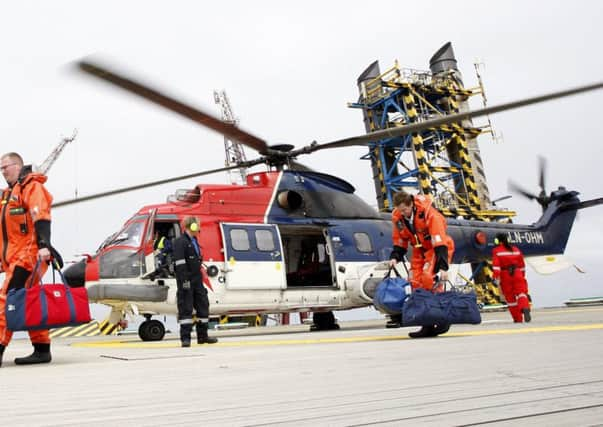North Sea oil and gas industry sizes up bigger rig workers


New research by Aberdeen-based Robert Gordon University and trade body Oil & Gas UK published today revealed some UK workers are larger than average American males and take up more space than earlier data had suggested.
Using portable 3D scanning technology, researchers measured 588 male offshore oil and gas workers and extracted a total of 26 measures, including shoulder width, chest girth, neck girth, and a series of volumetric measurements of the arm, leg and torso.
Advertisement
Hide AdAdvertisement
Hide AdMeasuring workers in different standing and sitting postures and in form-fitting shorts, as well as full survival suits, the research is the most comprehensive study ever carried out to date.
The measurement data has informed the team’s focus on offshore worker’s body dimensions and their ability to pass in a confined space, and through a window frame representing the smallest acceptable exit window size on a helicopter.
Dr Arthur Stewart, of the university’s faculty of health and associate Robert Ledingham worked with senior business analyst Moira Lamb and medical advisor Dr Graham Furnace from Oil & Gas UK during the two-year study.
It was prompted by industry recognition that existing size information on offshore workers was out-of-date, and although the workforce was heavier, how that had impacted on their shape and space requirements was unknown.
Using the measurement data the team has developed a prediction model of workers passing a simulated helicopter window egress, based on dimensions extracted from 3D scans of 404 individuals.
The frame size selected for the study was 432 x 356 mm and represents the Civil Aviation Authority’s (CAA) minimum acceptable size for an escape window on a helicopter.
Dr Stewart said: “Those who fail the window egress test are probably bigger in any single dimension than those who pass, but that probability is not 100 percent - it is between 70 and 80 percent.
“It seems that a few very large individuals can escape through this small aperture, and we should perhaps focus on trying to predict why some smaller individuals can’t.”
While larger individuals were less likely to escape through the window, the most accurate predictive test of whether a person would pass or fail would require 30 measurements.